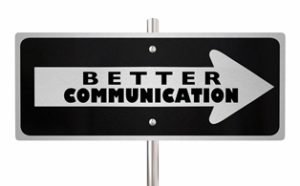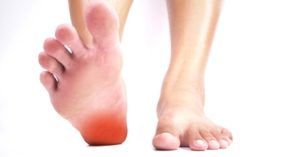Symptom modification of painful gait

Symptom modification procedure is common practice in the Physical Therapy profession. This procedure involves identifying the specific movement, posture, and/or activity that reproduces the patient’s symptoms.
Historically diagnosis of musculoskeletal problems was based on examination which selectively provoked musculoskeletal tissues by compressing or stretching the various tissues to provoke the symptoms. This provided direction for intervention to avoid the movement, posture, or activity which provoked the symptoms. Guidance of “if it hurts don’t do it”. This historical approach is incomplete and insufficient.
The next logical step is to identify the movement, posture, and/or activity which alleviates or diminishes the symptoms.
Examples of Symptom Modification Approach in Physical Therapy
The McKenzie mechanical diagnosis and therapy method developed by Robin McKenzie in the late 1970 early 1980 has been shown to reduce back and sciatic pain symptoms within on treatment session.
The Movement System Impairment process developed by Shirley Sahrmann and colleagues involves identifying impaired movements and sustained alignments in a specific direction which may be related to musculoskeletal problems and how to alter the impairments during all activities of daily living particularly those that contribute to symptoms. Individuals with hip pain can stand with shoulders over hips and avoid standing with shoulders swayed back behind hip joints.
The shoulder symptom modification procedure originally developed by W.B. Kibler involves altering the posture of the spine, changing the shoulder blade position in order to alleviated or diminish shoulder pain is another example.
Isometric strengthening exercises are used to modify pain associated with tendon problems so they can continue meaningful activity with less pain. Plantar heel pain can be addressed with isometric strengthening exercises.
Advantages of symptom modification procedure
For the patient:
- Within session reduction and/or elimination of pain symptoms
- Provides some autonomy or control of the problem, enhanced self confidence
- Increases level of self-awareness which by itself is often therapeutic
- Facilitates individualization of intervention
- Facilitates earlier return to desired activity
- Can decrease the number of healthcare visits and costs
For the healthcare clinician:
- Improves communication when client can see immediate benefits
- Facilitates the all-important level of patient engagement
- Assist in determining whether treatment should continue or whether referral to a different kind of healthcare provider is needed.

Applying symptom modification procedure for pain when walking/running
Symptom modification procedure is widely used for shoulder pain, back pain, headaches, neck pain. It has not been used for pain problems associated with walking and/or running but is can and should be. The following are a few examples of seeing gait deviation walking or running and consciously cueing to eliminate the gait deviation to decrease, eliminate and/or prevent pain walking or running.
- Back pain walking
- Status post total hip/knee joint replacement
- Knee pain and here
- Plantar heel pain here and here
- Achilles tendon pain
- Shin splints here and here
- Geriatric fall risk gait

Limitations of symptom modification procedure
While this procedure has distinct advantages, limitations need to be recognized.
Modifying alignment and movement is just one of many factors that contribute to pain syndromes. Care needs to be taken to avoid assuming altering the movement and eliminating the pain addresses the cause. There may be other factors contributing to pain such as psychological issues, economic issues and social issues.
Recognize the reason or the why the procedure decrease symptoms is NOT known. Could be change in mechanics, motor control, and/or placebo effect. Patient is seeking and expecting pain relief.
It is easy to jump to the conclusion “I have control of symptoms I don’t need to look any farther”. That is a mistake.
There are times when the pain symptoms are so acute and sensitive and attempting to move to provoke symptoms is too early or not appropriate.
Some patients can have pre-existing obsessive-compulsive behaviors and care needs to be taken. The advice of “if it hurts don’t do that” can be taken to an extreme and become detrimental.
If the musculoskeletal pain cannot be provoked by movement and/or cannot be modified by altering movement it is very unlikely that Physical Therapy is the most appropriate intervention. Intellectual honesty is needed and referral to a more appropriate healthcare professional is best action.
Research regarding reliability of this procedure has been done as it applies to shoulder symptoms. Additional research is needed to address the uncertainties and questions regarding this procedure. Is this procedure more effective than a different clinical decision process? Is this procedure more efficient than a different clinical decision process? Does this procedure increase the level of patient engagement? Are certain types of individuals better suited to use this procedure than other individuals?
In the meantime, symptom modification procedure is a valuable tool for clinical decision processes. Symptom modification procedure can and should be used to address pain associated with walking and/or running.
A on demand-video webinar exploring this topic is available at Plus by Physiopedia entitled “Techniques for 2D Slow-Motion Video Data Motion Analysis”.
Use this code – “Damien25” for a 30% discount to access this webinar as well as the more than 500 continuing education webinar courses available at Plus by Physiopedia. This is the link http://bit.ly/DAMIEN25 with the 30% discount code embedded.
The information on this website is not intended or implied to be a substitute for professional medical advice, diagnosis or treatment. You are encouraged to perform additional research regarding any information contained on available through this website with other sources and consult with your physician.
Damien Howell Physical Therapy – 804-647-9499 – Fax: 866-879-8591 At-Home, At Office, At Fitness Facility – I come to you, I do home visits Damien@damienhowellpt.com

